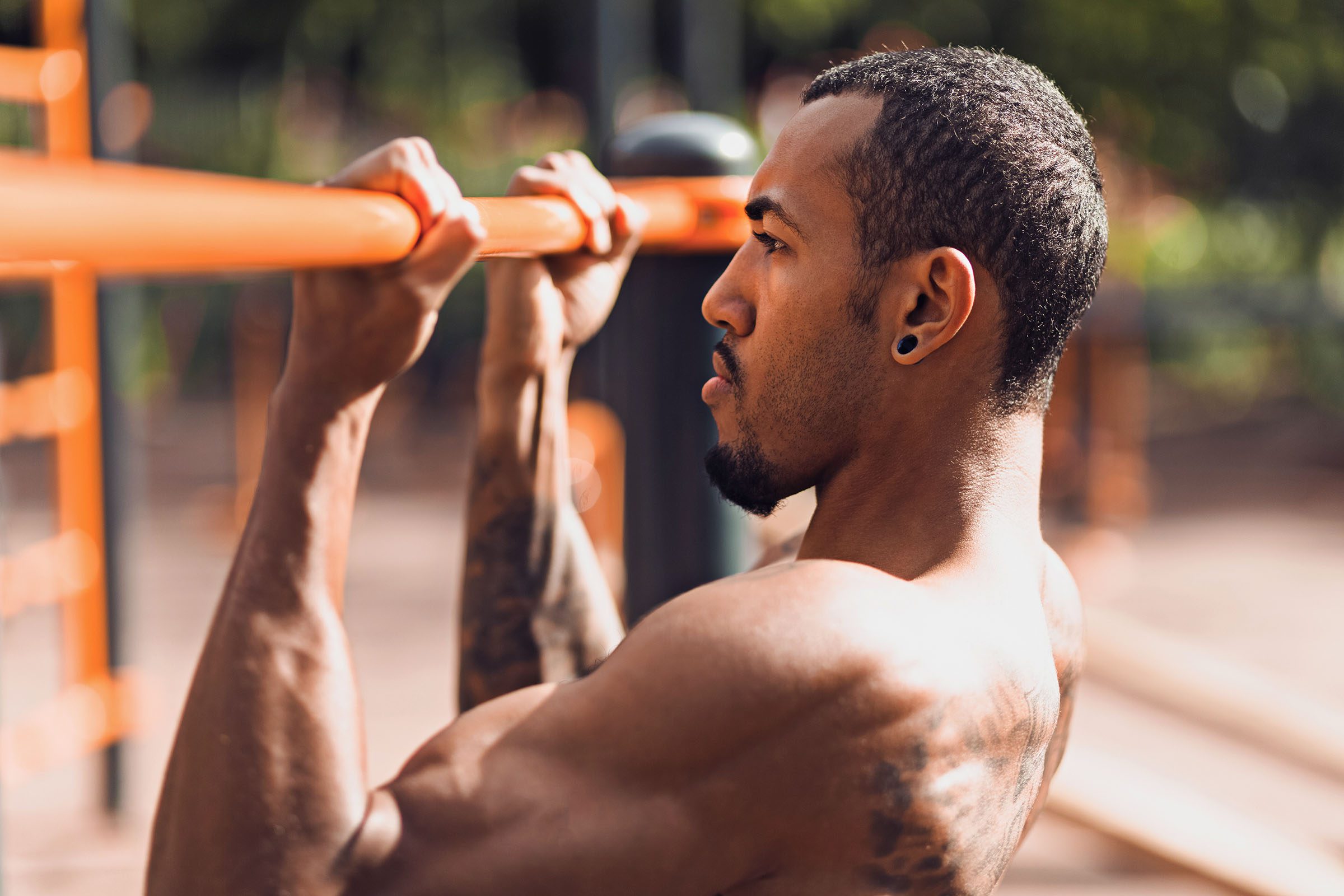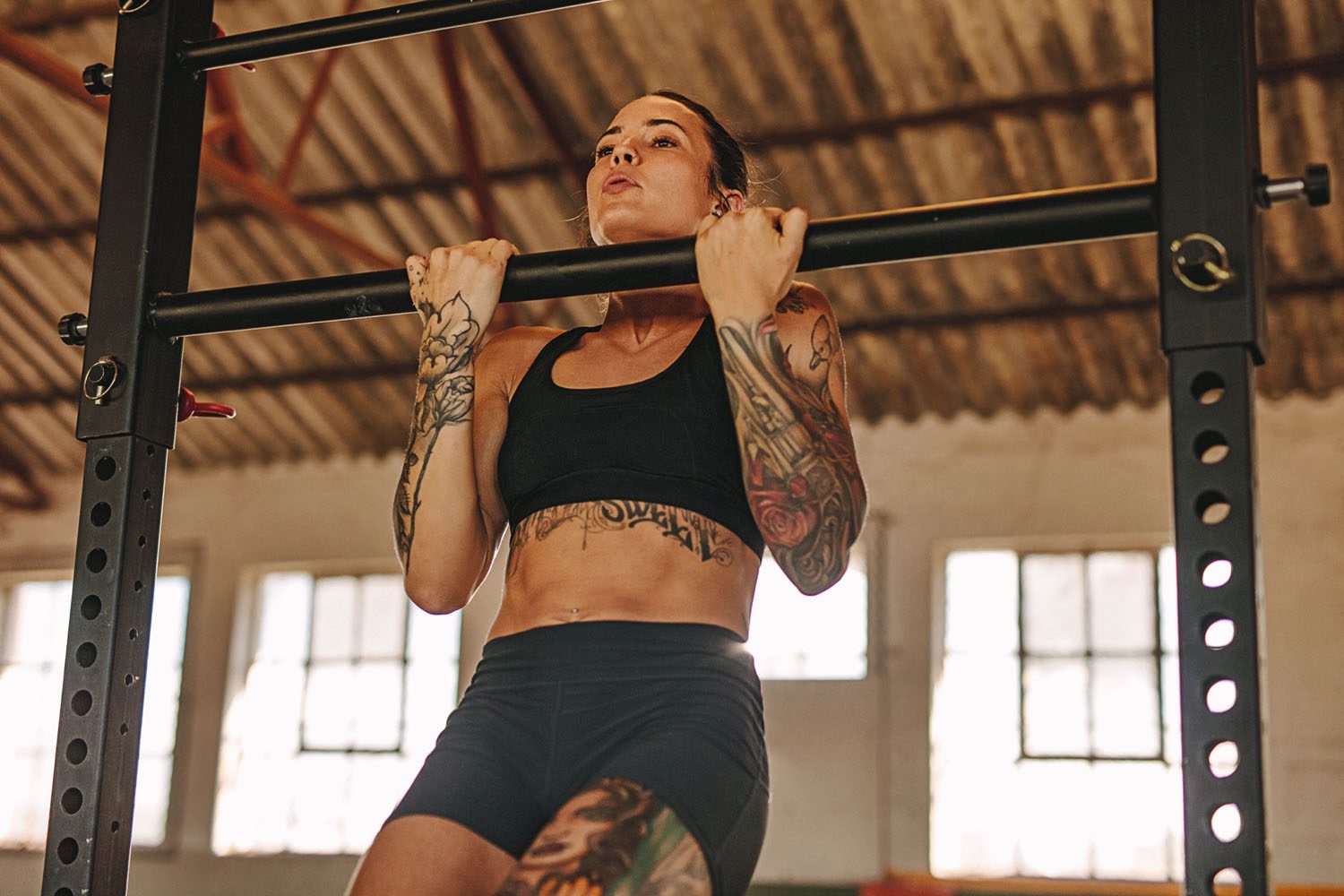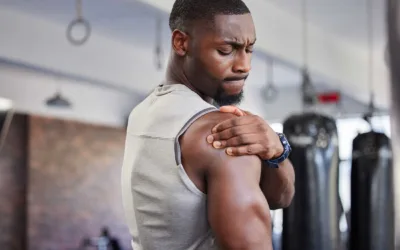Want Bigger Biceps? Do More Chin Ups!

How are your biceps looking these days? If they measure in under the circumference of a toddler’s torso, you’ve got work to do. Maybe you unfortunately missed the “arm gene” and have to actually try to grow your biceps, which means hitting your arms from as many angles as possible.
Joseph Lucero, owner of Harvesting Strength, is a powerlifter and strongman coach with years of practical S&C experience in high school, collegiate, and professional settings. Read on to discover all the reasons to include chin ups in your bicep training.


Re-Think Your Arm Training
Think of another hinge you witness on a daily basis — opening a door. The door is built on hinges so when you open or close it, it moves either forward or backward, just like the elbow does. In this case, it means arm training only goes forwards/backwards, up/down… right? If that’s the case, why are we bothering to discuss arm training in depth?
Arm training doesn’t have to be a single-joint movement.
Single-Joint vs. Multi-Joint Movements
Some of my favorite movements to program for my clients’ arm training are multi-joint movements. A multi-joint movement is hugely beneficial for so many reasons.
Think about a bicep curl versus a barbell squat. If I asked you to perform 20 reps of a bicep curl or 20 reps of a barbell squat, which one is more exhausting? Not shockingly at all, squats are more exhausting.
Most would allude to the fact that squats are just fatiguing because they require massive levels of force using your posterior chain muscles, and that’s exactly correct. The more muscle groups incorporated, the more metabolically exhausting an exercise can become.
The single-joint bicep curl requires the biceps to play the main role in the movement (also called an isolation exercise). However, if you use a multi-joint movement that requires more muscular recruitment, you put yourself in a much more fatigued state. That fatigue evokes a higher level of an anabolic response.
Few movements can top the chin up when it comes to multi-joint arm training. The chin up is not only excellent for strength, but muscular hypertrophy as well.
Change the Way You Train
Aren’t Chin Ups & Pull Ups The Same?
When I was a kid, we did either chin ups or pull ups in gym class. They’re basically the same thing, right? NO!
The chin up is performed with a supinated grip, while the pull up is done with a pronated grip. During the pull up, your palms face away from you. When working on chin ups, your palms face in toward you. Your grip position alone makes a huge difference in the movement pattern for this multi-joint exercise.
With a pronated grip your shoulder joint is allowed to have a much wider range of motion. For the most part, pull ups are performed in the frontal plane, similar to the plane of movement for a jumping jack.
When doing chin ups, the supinated grip keeps your elbows tucked in and limited to the sagittal plane of movement, so your elbow joint and shoulder joint work in conjunction to move your body up and down. This pulling motion puts a heavy load on your biceps, while your lats and back do most of the work in a standard pull up.


Chin Ups for Biceps + Variations
What’s similar about the chin up and most bicep exercises is that the palms face upward (for the most part, not all the time). So, if you focus primarily on the elbow joint for ANY pulling motion with a supinated grip, it looks a lot like a curl. This explains why the bicep plays a dominant role.
It doesn’t stop here, though. When doing the chin up, there are tons of ways to modify the movement to target the various fibers of the bicep head.
Chin Up Variations
Pause
You can focus on pausing chin ups to fatigue the top of the muscle. Just get to the top of your chin up position and hold for 2-3 seconds. This puts plenty of stress on your back and biceps together.
Tempo
Try changing the tempo of the movement during the eccentric (down) phase. Counting a 3-5 second descent will promote vigorous muscle fatigue and a huge stretch at the bottom. You can also try a slow tempo for the concentric (up) phase. Don’t blame me if you’re insanely sore after trying sets of chin ups at 3-second up, 2-second pause, 3-second down.
Banded
If you don’t have the upper body capacity to rep out a ton of chin ups, don’t hesitate to use a band to take away some of the resistance. As you get stronger, you can ditch the band. But even the assistance of a thin loop band can help you get the extra reps in. Focus on volume!
Grip Changes
I know the supinated grip is important, but consider using a neutral or even angled grip. The neutral grip starts to move the displacement of the load and works not only the various bicep heads (short head and long head), but also the brachioradialis.
The brachioradialis is a muscle located in the lateral forearm that helps add to the illusion of having a much more muscular arm. Hell, it’s not even an illusion! Those who train wisely will understand the importance of this muscle, in addition to the bicep muscles, to build a proportionately stronger looking arm for size and performance.
I absolutely LOVE the chin up as an exercise for bicep hypertrophy and strength. Sure, other muscles are being utilized during the chin up, such as the latissimus dorsi and the various trapezius fibers of your back, but as we noted before… the more muscles and joints used, the more metabolically exhausting the movement becomes.
Remember: more metabolic exhaustion means a greater spike in naturally secreting growth hormone for muscular hypertrophy.
I HIGHLY recommend stacking chin ups with an isolated bicep movement like curls. The chin up + curl superset is guaranteed to get your sad little meat sticks feeling like thick slabs of beef.
PS. Be sure to check out this blog if you need more juice in your pull ups:
5 Tips to Get Better at Strict Pull Ups
Want Training Tips, Exercise Guides & Knowledge Bombs Sent to Your Inbox?
Sign up for the FitNerd newsletter from TrainHeroic
Related articles
The Best Exercises to Improve Your Sprinting Speed
Looking to get a boost in your sprinting speed? Whether you’re striving for a personal best or just getting your legs and lungs back into the habit of running fast, these exercises will give you a more efficient, stronger and speedier stride.Written Bymorey croson...
Top 6 Exercises for Managing Shoulder Injuries
After 6 years of coaching at the highest levels across multiple disciplines, the most common issues I see in my sports therapy clinic have to do with the shoulder. Statistics show us that shoulders are the most commonly injured area in many sports including CrossFit,...
How to Get Your First Pistol Squat
The single leg squat (a.k.a. pistol squat) is a challenging, advanced movement that requires single-leg strength, stability, mobility, balance, and motor control. If you are looking to get your first pistol, or just want to continue getting better at them, here is a...


Join the community
Sign up for the latest training news and updates from TrainHeroic
Support
Made with love, sweat, protein isolate and hard work in Denver, CO
© 2023 TrainHeroic, Inc. All rights reserved.







